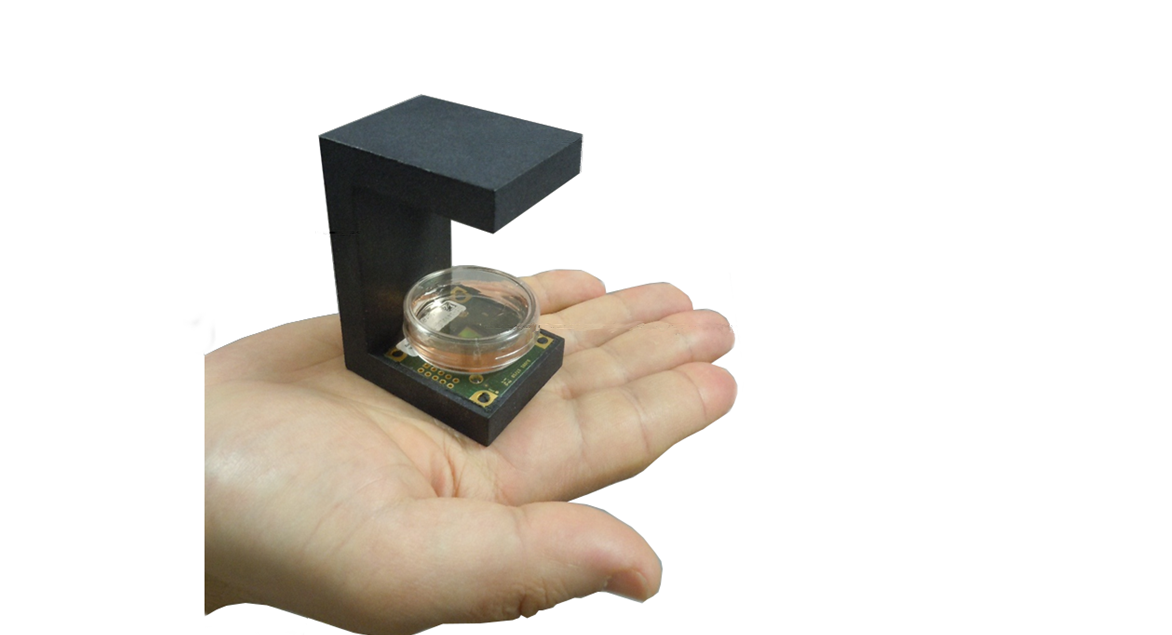GRENOBLE, France – Dec. 19, 2019 – Miniaturization of sophisticated technologies has opened the door to innovative health-and-safety equipment that enables advances such as onsite, immediate evaluation of environmental risks and patient-sample analysis outside the lab. French research institute CEA-Leti's lensfree microscope for diagnosing spinal meningitis at a fraction of the cost of bulky existing systems is the latest breakthrough in this field.
The microscope, which will be demonstrated at CES 2020, can be operated by healthcare professionals at the patient's bedside. It provides immediate results and accurate countings of white blood cells (leukocytes) in cerebrospinal fluid, which is required to diagnose spinal meningitis, an acute inflammation of the membranes covering the brain and spinal cord.

|
Results in One Minute
The technology costs about one-tenth as much as an optical microscope and can image up to 10,000 microscopic biological objects at a time. Protected by 25 patents, the microscope has neither lenses nor moving parts. The analysis results are available in about one minute.
The system operates with a near-infrared light emitted by a LED that is diffracted by the biological sample being analyzed to generate a holographic pattern captured by a CMOS image sensor. Holographic reconstruction algorithms digitally recreate the image of the object on a display. Artificial intelligence software then detects, analyzes, and even classifies biological objects by tracking metrics of interest. All of these steps are automated.
CES 2020 Demo
Visitors at CEA-Leti's booth at Eureka Park - Sands Expo - booth #50463 can observe the power of lensfree imaging to count and identify a variety of biological objects. Moving the slide under the microscope they will see the image being digitally reconstructed in real time by the microscope's powerful algorithms. And they can watch as the embedded AI algorithms count and classify the objects being observed (eukaryotic cells, colon or lung tissues, plankton, neurons, etc.) in real time.
More details here.